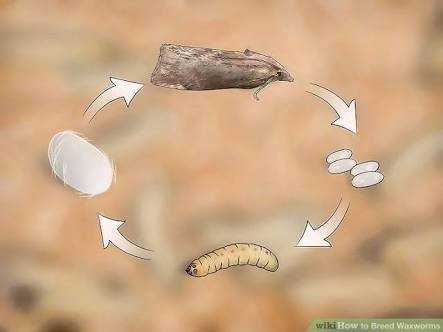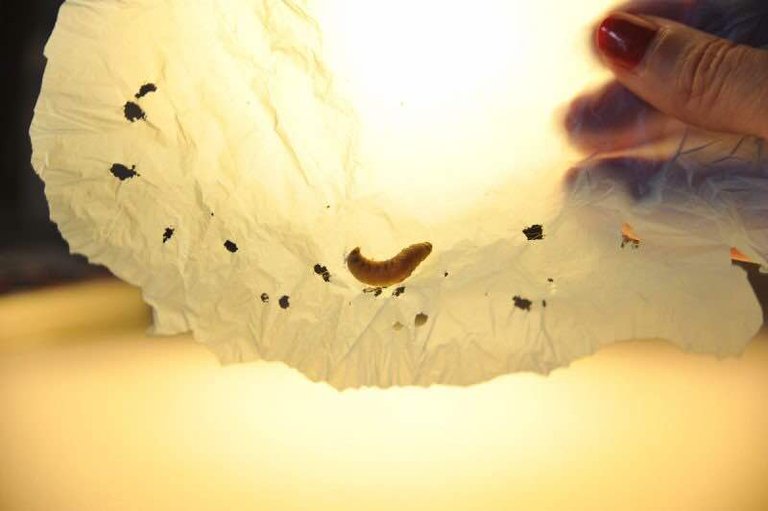I happen to be really excited today as an exciting new phenomenon is in the works. A finding that could potentially redefine the waste management industry globally for the betterment of mankind. A new hope for a cleaner and much more serene environment.

You all would agree to the fact that bio degradation is one of the easiest, safest and most feasible way to take care of our waste. It is not only cheap but most importantly, it reduces pollution, drastically!
By-products of this degradation could actually serve as a source of energy for human consumption e.g crude oil;Yes the black gold derived from degradation of organic fossils over a very very long period of time.
More so, because biodegradation is natural, it preserves the ecosystem which is key to the survival of living things in general.Why all this excitement?
This is simply because elimination of plastic waste has been made easy.
A little bit of fact, Plastic waste has been a menance to the society. You would be surprised that plastics which were produced in time immemorial,are still in existence. This is because the safest way of currently taking care of plastic waste is recycling. This means, I could have as well used a plastic cup previously used by Abraham Lincoln without even knowing.
In the UK alone,studies have shown that every year, More than 5 million tonnes of plastics are consumed. Out of this 5 million, just around 24% makes it to be recycled. This then leaves about 3.8 million tonnes of plastics lying around and polluting the environment.This isn't a good note because plastic has been linked to a lot of not so good situations. From its effects on tourism and recreation to the health of humans and animals. Even the fishes in the sea and the birds of the air, do not escape the manace of plastic pollution.

Before I Dive Into The Miracle Solution Discovered, Why are plastics so difficult to biodegrade?
Most times, the raw material for manufacturing plastic is petroleum. The outcome of a few million years of natural decay of organisms that were once alive, is actually petroleum.The main components of petroleum, comes from lipids. These lipids, were also first of all, assembled in those organisms cells.Now am sure your thinking... if plastic can be derived from petroleum, and petroleum happens to be an organic material... then why isn't plastic bio-degradable?
Now the answer to the above question is the fact that, there are certain organisms whose job it is to break down organic matter. The only catch here is that, during the process of manufacturing the plastic, there's a very important process which turns the petroleum into a material that the organisms meant to break it down do not recognize.
Propylene is a simple component of petroleum and most plastics are derived from this component. Chemical units monomers of propylene gets linked together When you heat up propylene in the presence of a catalyst. This happens
by forming extremely strong carbon-carbon bonds with each other. This results in long chains of monomers called polypropylene.

The component of plastic we need to concentrate more on is polyethylene because that’s actually wat this enzyme degrades.
Wax worms, The Key to A Cleaner Environment?
Yes! wax worms. A little piece of recent discovery has shown that the larvae stage of this worm (galleria mellonella/ greater wax moth) has the ability to eat up plastics.
Wax worms are a good source of energy for animals higher up in the food chain including lizards, birds, frogs, and other reptiles.
They are quite active with a soft white/tan body and an average length of 3/4 inches.
Looking at their life cycle, it is quite the same pattern as some insects, moths or worms.
It begins with laying of eggs developing into a larvae, pups and finally adult stage.
Takes approximately 6-12 weeks for the completion of its life cycle( from egg to adult moth).

The developmental stages of the wax moths depends on optimum temperatures 28-30 degree centigrade and good environmental factors.
After mating, a female wax worm starts laying eggs and continues for about 5 days producing about 300-600 eggs. These eggs are laid in batches in the dark and hatches within the next 35 days into the larvae.
The larvae then begins burrowing through the comb of a hive. The tunnel is also lined with a silken web.
This action, is what causes damages to the cells of honey comb. And sadly, it affects the yield and also sales of honey products.
The larvae grows into the pupae between 20days to 5months and into the adult stage within another two months.
Female adult worm live for approximately 12 days while the male could live up to 21 days.
Now we’ve learnt a little on the life cycle of this organism, it is most appropriate at this point to meet the scientist responsible for this discovery and how she managed to achieve this feat.
The Great Discovery!
Dr. Federica Bertocchini a Spanish scientist and an amateur beekeeper picked up parasitic wax worm from infested honeycombs and put them in a plastic bag.
After a while realized that these worms had eaten through the plastic bag.

She then teamed up with other scientist at The Cambridge University in England, to find out if actually the plastic bag was solely eaten by the worms.
They found out that the worm could actually degrade polyethylene (a component of most plastics) at a very remarkable speed.
When 100 wax worms were exposed to a plastic bag,
holes started appearing after 40 minutes and the bag was depleted by 92 milligrams after 12 hours.
These worms had transformed polyethylene in the plastic bag into ethylene glycol, a chemical useful for the production of polyesters and anti-freeze agents.
Thus these worms could help in waste control and also produce useful bi-products in the process.. Incredibly Remarkable!!!
However , the exact mechanism of action instituted by these worms to achieve this is still not known..
The scientist believe though that the larvae has some thing in its salivary gland or a symbiotic bacteria in its guts that is responsible for this.
They are optimistic if a single enzyme is responsible for this process, then its production in a large scale using biotechnology should be achievable.
In a nutshell, this discovery is still work with progress. Though not tested, It possess the potential to curb the menace of plastic waste on the environment..
The questions many would ask are,
- Are we just going to put a lot of wax worm out there in our environment??
2.Could these worms really be the solution to our pollution problem??
Below are the responses by Dr Bertocchinni herself from an interview she granted. You can find the interview here
1.They are a plague for the environment, you cannot throw millions of worms in the environment, the equilibrium in nature must be respected.
2.We need to dissect the molecular devices responsible for this effect. Once we know that, we might be able to produce the hypothetical molecule in large scale and use it as a tool to biodegrade plastic. But we are at the first phase, that is the observation. From here to the putative biotechnological application some time will pass.
Source
Hmmm, let’s keep our fingers crossed!
This is However, a great progress in a very tricky but right track. We are all waiting to see the results.
Thanks for reading!
All Image Sources Are Stated In Text!
Text Sources:
 by @foundation
by @foundation
That's interesting, it's good to know that we have another option in our arsenal in the fight against waste pollution. 👍
this is very quite interesting..i find it encouraging that ways to solve waste byproducts are coming up.